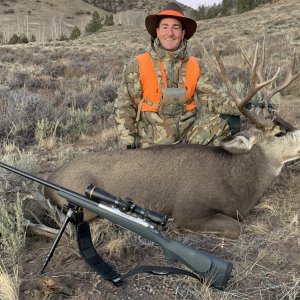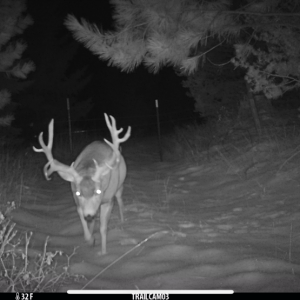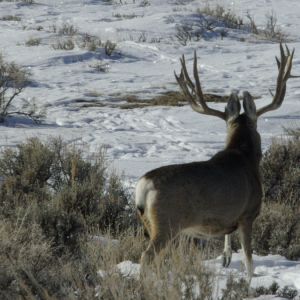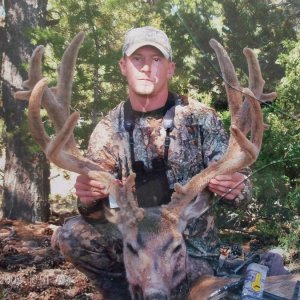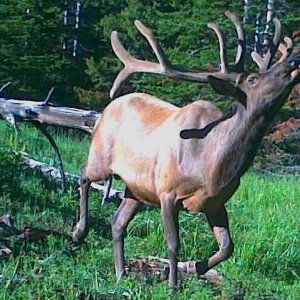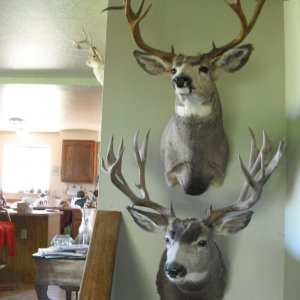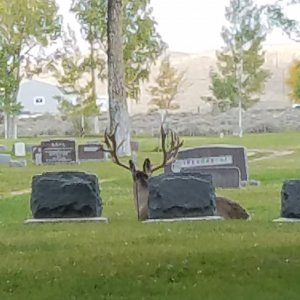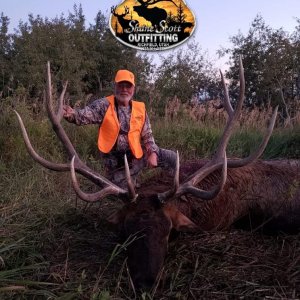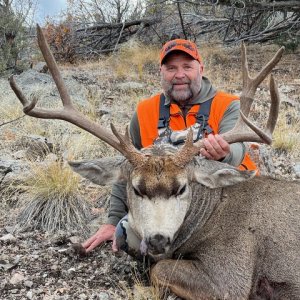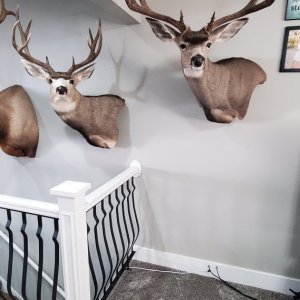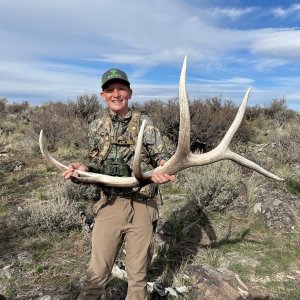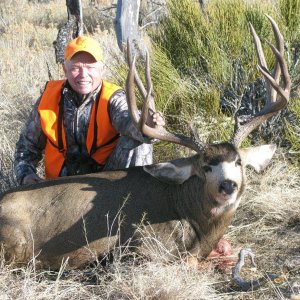Nice bucks !!!
I don't have any specific video's to share, but learning to use your camera's manual modes in a hurry to catch the critters before they disappear is one of the most important things you can learn with photography and particularly video.
I shoot all my video in M mode exclusively. There are three things that are imperative to get good looking shots.
Focus, aperture and ISO.
First is shutter speed though. For shooting video shutter speed should be fixed at 1/50 - 1/60th second for 30p recording. This may sound counter intuitive, but if you use fast shutter speeds above 1/125th you will get video that strobes and looks unnatural. While each frame at 1/50th may have more motion blur and not sharp like a photograph, it looks much smoother and pleasing to the eye when watching as video. Your mind makes up the detail of the scene from multiple frames. In the film world this is called 180 degree shutter rule and is used nearly universally.
Manual focus is the most important thing. Learning to switch your camera to full manual focus so you control it at all times is what keeps your video from looking like the born and raised guys. That face out of focus with the background sharp, trees in front of the animal in focus and hunting for focus in low light are the reason you have to learn to do it yourself to get exactly what you want. Learn this and use what is called peaking to see what in your scene is in focus. It takes tons of practice though.
Aperture is the opening of the lens. Learning to control the opening manually allows you to control how much of a scene is in focus and to always allow for the lowest ISO in low light conditions. For panoramic images you want to set the aperture to F8 - F11. This will close the opening down in the camera so you get the deepest range of distance that is in focus. For the best wildlife and portrait image you want to have the lowest aperture (largest opening in the lens) that you can. This makes the depth of field the shallowest and separates the subject you want from a more blurry background. Another thing to help with this effect is to get closer to the subject. The closer you are the shallower the depth of field that is in focus with the lowest aperture.
ISO is to be set as low as possible to get a properly exposed image. ISO's above 1600 start to become very grainy and rarely will look good. Find more light and keep it lower to get better video and stills. Letting the camera run wild up to ISO 6400 or higher will just kill your image.
Anyway there's a few starting points to look into. YouTube has some great video's on filming the moon and timelapse type stuff with your P900. Check those out as they are very camera specific.
Cheers, Pete
http://www.youtube.com/user/c3hammer
